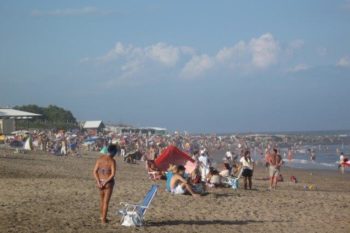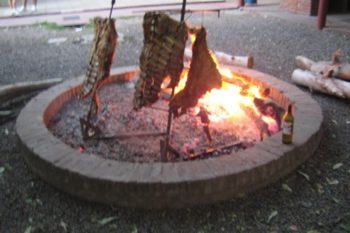Deserters from the troops deployed at the outposts of the Spanish Empire? Spanish émigrés? Moorish refugees fleeing from the Inquisition? Nobody knows for certain. The origins of the Gaucho remain shrouded in mystery.
According to Commodore Juan Jose Guiraldes, the late founder of the Confederación Gaucha Argentina (an umbrella organization that brings together 24 regional associations that promote the gaucho culture and way of life), between 1550 and 1750 some men made their living killing wild cattle that roamed the pampas (flat grasslands) while on horseback. These primitive gauchos were forced to become highly skilled riders as well as horse-breakers. Many times, their life hung in the balance and their horse was their only hope of survival, as well as their most prized possession.
The Gaucho lived at the edges of civilization, such as it was in the early 1800s, driving cattle, fighting off brutal Indian attacks, even joining the Creole army during the War of Independence. The Gaucho led a nomadic life filled with hardships: the desolation of the vast pampas, unbearable heat, driving rain, scarcity of food and water for himself and his mount. This shaped his character and gave him an unshakeable sense of freedom and independence.
The Desert Campaign, a military campaign designed to establish dominance over the Patagonia in the 1870s, brought about some changes in the life on the Gaucho. Some were ill-treated by the authorities, which inspired the epic poem Martin Fierro – written in 1872 by Jose Hernandez, it later became the symbol of our national identity – but most gauchos decided to abandon their independent nomadic life and get employment as ranch hands in the many estancias (cattle ranches) that sprung up around that time. Living on an estancia gave the Gaucho a social and cultural identity.
The jobs Gauchos do on an estancia (like branding, weaning calves or rounding up cattle) haven’t changed much since those times.
The traditional weapons used by Gauchos were the facón, a large dagger tucked into his belt at the back so that it could be quickly drawn with the right hand. It was an important tool of his trade which could also be used for eating and self-defence. The boleadoras were three wooden balls or rocks tied with braided leather cords. They were used as throwing weapons to capture running animals. Gauchos also used a rebenque, or leather whip.
A Gaucho’s “prendas domingueras”, or Sunday best, consists of a white shirt, black bombachas (loose fitting trousers belted with a faja – sash- or a chiripá – a piece of fabric tied in the manner of a loincloth), a black wide-brimmed hat called chambergo, a kerchief tied around the neck, a poncho –which in the past doubled as saddle blanket and sleeping gear- and black riding boots.
Modern gauchos wear jeans and Wellies for work but don this outfit on special occasions.
The Gaucho is known for his staunch principles and patriotic feelings; he is as good as his word and quietly proud of his heritage. His culture is exceptionally rich; it encompasses music, poetry, dance, folk lore, and unique patterns in textiles, silverwork and leatherwork. Most dances are danced in groups and pairs, but the most spectacular dance has to be the malambo. This kind of tap dance is executed by men only and is based entirely on rhythm provided by drum beating. The malambo dancer’s feet barely touch the ground and all his moves are energetic and complex. Dancers use boleadoras and other aids such as lassos.
Nowadays, there are about 150,000 gauchos looking after around 55 million heads of cattle, 25 million sheep and 2 million horses day in day out. And although they wear jeans and use cell phones, they have the same skills and uphold the same principles as their predecessors.
All photos from Confederación Gaucha Argentina and Jineteadas.
Read more:
Mate, a most democratic infusion
Street style from Finland
Darfur horse festival










Thanks for all this information! I knew (vaguely) about gauchos but had no idea they still exist. Very interesting post.
Liz, thanks for your comment. Unfortunately one article is not enough to cover the subject, there is so much more to write about!
Very interesting, Ana! Their clothes and life with horses remind me of the horse culture from Andalucía, except for the poncho.
Are there any gauchas now? Have they ever existed? Or is it similar to Mexican charros and cowboys from the US in the sense that it’s a man world?
Marta: some say that the gauchos have Andalusian roots. The chambergo is the same Spanish troops wore in tropical places, like during the Philippines war.
You’re right in that it is very much a man’s world. The women were called “chinas” (who knows why) instead of gauchas. They looked after their man, cooked his meals, served mate, etc. etc. Even today, women do not round up cattle, etc., although they look after farm animals like chicken, pigs, and the like.
Thanks, Ana! It’s very interesting! Besos to you 🙂